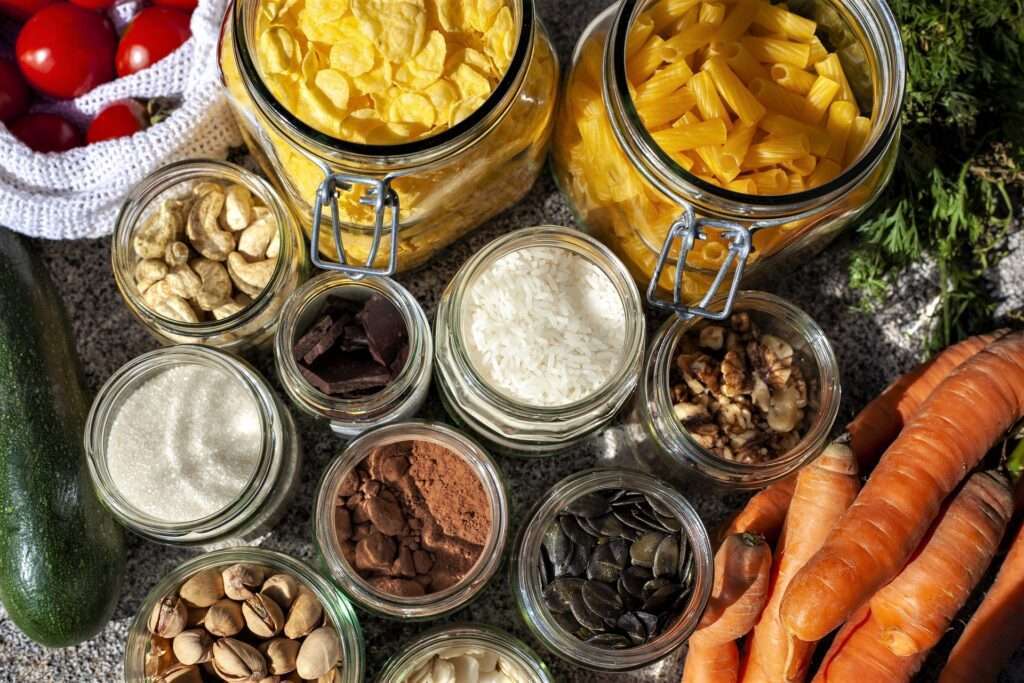Every time we pick and choose things to consume (food, clothing, cleaning products etc.), we make a decision that affects our health and the health of the planet. We choose the type of world we want to live in, and the world future generations inherit. (Yeah, it’s a little heavy and overwhelming but stick with us.)
And, TBH, we’re nowhere near perfect. But, like author and blogger, Anne Marie Bonneau, says: “We don’t need a handful of people doing zero waste perfectly. We need millions of people doing it imperfectly.”
There’s comfort in those words.
We all have different budgets, lifestyles, and priorities. Your version of Zero Waste is different from everyone else. So, rather than being hard on yourself for things you haven’t done, be proud of the change’s you’re making — big or small.
In the spirit of entering a brand new year full of endless possibilities (yup, we’re optimistic!), we want to share ways you can inch yourself towards Zero Waste. Tackle them together or take it one change at a time.
However you go about it, we’re here to help.
10 ways to add Zero Waste to your life
Skip the to-go cup.
Most disposable to-go cups aren’t recyclable, so it’s an important and easy switch. Plus, your beverage of choice doesn’t stay hot in a lined paper to-go cup.
The hardest part about making this switch is remembering your cup! But, once you get in the habit of having it with you, you’ll wonder why you didn’t do it sooner.
Get a bamboo toothbrush.
It takes over 400 years for one plastic toothbrush to decompose! In Canada, we toss around 111 million toothbrushes per year — that’s a whole lot of plastic heading for landfills and oceans.
Bamboo toothbrushes are biodegradable and last just as long as a conventional toothbrush. Plus, unlike plastic, bamboo is naturally antimicrobial.
Pass on junk mail.
It’s more than an inconvenience you find in your mailbox and on your doorstep, junk mail needs millions of oxygen-producing, carbon-absorbing trees (each year) and creates more recycling to deal with.
Use refillable laundry & dish soaps.
Canada produces about 4.6 million metric tonnes of plastic each year and recycles about 9% of it. Opting to refill your laundry and dish soaps is a great way to ditch all that single-use plastic. Take it one step further and choose non-toxic laundry and dish soaps. (Hey, we know a place!)
Buy bulk dried goods (like rice, beans & pasta).
The majority of dried goods are packaged in plastic. Why not skip the waste and switch to bulk dried goods? They’re easy to store in canisters and jars (glass, ceramic … any container you’ve got piling up works).
Ditch paper towel.
Invest in cloth napkins, tea towels, and cleaning rags to avoid using disposable products in the kitchen and bathroom. You’ll help the planet and save money!
Shop smart.
Often easier said than done, stick to your grocery list when rolling through the isles. This helps avoid impulsive purchases and increases the chance that you actually use the food you buy.
Eat more healthy, whole foods.
Processed food requires plenty of packaging. It’s also filled with ingredients our bodies shouldn’t have (at least not regularly).
Opt for fresh, unpackaged fruits and vegetables as much as you can. If you can’t ditch the packaging completely (we get it, it’s hard), choose foods that come in recyclable or compostable containers.
Buy less stuff.
When in doubt, don’t buy it. Buying less stuff is the easiest way to reduce waste — and keep money in your wallet!
Donate unused items.
Whether it’s an old pair of jeans, books you’ve read, or household items you no longer use, donate them to a homeless shelter, thrift store, or someone you know. If you need (or want) extra cash, there are plenty of options to sell used items online.
___
What change(s) are you ready to make to create less waste?

